#arduino martina
Explore tagged Tumblr posts
Text

Marco Agostino | Arduino Martina | Teatro alla Scala | Photo by Veronica Mauro
21 notes
·
View notes
Video
youtube
Sylvia versione Legris - Pizzicati - Martina Arduino
2 notes
·
View notes
Text
[Photo Album] Onegin at La Scala with Roberto Bolle and Marianela Nuñez
Photo album of this year's rehearsals for Onegin at La Scala and the last production onstage in 2019.
Onegin in rehearsal – Martina Arduino e Timofej Andrijashenko, photo by Brescia e Amisano (c) Teatro alla Scala Onegin returns to La Scala this evening, Wednesday 14 September, with Roberto Bolle in the title role, Marianela Nuñez as Tatiana, Nicola Del Freo as Lensky, Martina Arduino as Olga and Gabriele Corrado as Prince Gremin. In further casts – with several debuts – we see as Onegin,…

View On WordPress
#Alessandra Vassallo#Caterina Bianchi#Gabriele Corrado#Marco Agostino#Martina Arduino#Nicola Del Freo#Roberto Bolle#Vittoria Valerio
2 notes
·
View notes
Photo

Martina Arduino and Gioacchino Starace - Teatro alla Scala - photo by Luca Erbetta
#martina arduino#gioacchino starace#teatro alla scala#luca erbetta#dance#ballet#italian ballet dancers#ballerina#ballerino#dancer#tanzer#danseur#bailarín
11 notes
·
View notes
Photo

Martina Arduino in Excelsior.
#martina arduino#excelsior#teatro alla scala#ballet#ballerina#prima ballerina#gif#molly gif#my gif#ballet gif
12 notes
·
View notes
Photo
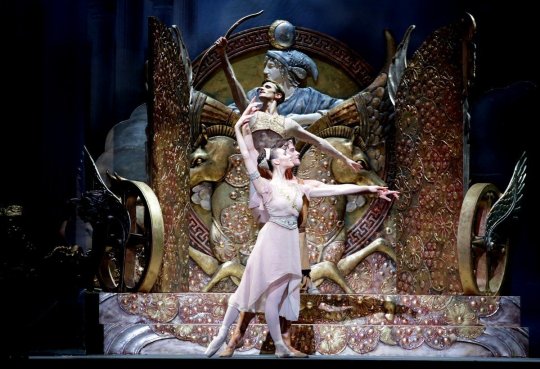
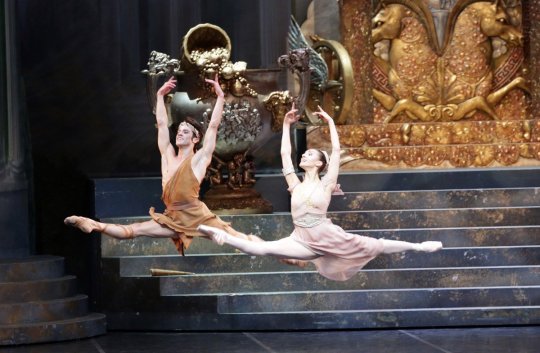
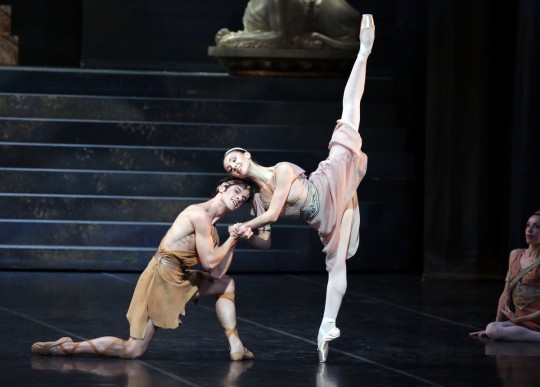
Martina Arduino, Claudio Coviello and Nicola Del Freo [1] in Sylvia (La Scala Ballet/Wiener Staatsballett, 2019)
#ballet#martina arduino#claudio coviello#nicola del freo#la scala ballet#wiener staatsballett#sylvia
149 notes
·
View notes
Photo

Martina Arduino
Swan Lake backstage
photo: Natalia Voronova
108 notes
·
View notes
Photo









Photographer Francesco Nazardo shot Martina Arduino, Charlotte Lamotte and Karina Samoylenko, three ballerinas from La Scala in a collaboration with Nike to empowered the symbol of strength and determination.
#francesco nazardo#martina arduino#Charlotte Lamotte#Karina Samoylenko#la scala ballet#la scala#nike#vogue#vogue italia#special project#fashion#style#ballet#мода#красота#балет#специальный проект
5 notes
·
View notes
Photo


Timofej Andrijashenko, Martina Arduino, and Claudio Coviello in Wayne McGregor’s Woolf Works (La Scala, 2019)
Photos by Brescia e Amisano
8 notes
·
View notes
Text
Chiudimi le labbra con un bacio, la bocca con la lingua E cominciamo a parlare.
_ Giovanni Arduino

Ph. Martina Matencio
12 notes
·
View notes
Photo


Martina Arduino and Marco Agostino, "Goldberg Variationen" choreography by Heinz Spoerli, music by Johann Sebastian Bach, sets and costumes by Keso Dekker, Teatro alla Scala
Photos © Monica Bragagnoli / Teatro alla Scala
12 notes
·
View notes
Text

Nicola Del Freo | Martina Arduino | Teatro alla Scala | Photo by Monica Bragagnoli
15 notes
·
View notes
Text
[Photo Album] La Scala’s ballet company in docuseries and World Dance Day
La Scala's dancers are featured in a new fly-on-the-wall documentary series filmed over the last six months. Also a ballet class for World Dance Day.
Teatro alla Scala, Corpo di ballo – photo by Sara Busiol Thursday 29 April at 19.00 CET – World Dance Day La Scala will broadcast a complete class with its corps de ballet on World Dance Day, 29 April. Ballet Director Manuel Legris chose to pre-record the ballet class with the dancers on stage: I wanted the La Scala Ballet to be present on this special day when we celebrate dance, though we…
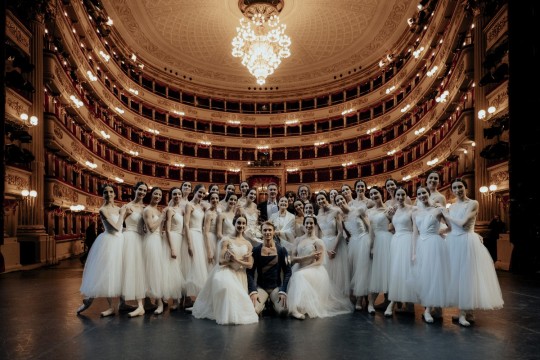
View On WordPress
#Antonino Sutera#Carla Fracci#Claudio Coviello#Frédéric Olivieri#Giselle#La Scala#Manuel Legris#Marco Agostino#Maria Celeste Losa#Martina Arduino#Massimo Murru#Nicola Del Freo#Nicoletta Manni#Timofej Andrijashenko#Virna Toppi
2 notes
·
View notes
Text
A Call for Living Infrastructure - Martina Huynh
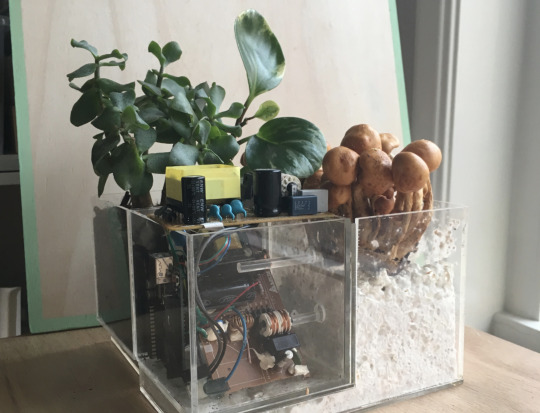
Mycorrhizal networks are mutually beneficial symbioses between plant roots and certain types of fungi - forming a beautifully complex infrastructure (for communication and the exchange of nutrients) that is alive, able to evolve and adapt to its environment.
Can we merge parts of our inanimate cable infrastructure with existing mycorrhizal networks to form a new symbiosis - to turn our infrastructure into a living organism that can grow, evolve and maintain itself? Can we integrate our technologies better with the natural landscape?
Instead of keeping ourselves busy with old modernist utopias like 'smart cities', can we envision different modalities of living together with our surrounding ecologies?
Imagine if we were to work closely together with a different species. Link our information network and with theirs, exchange goods and services to mutual benefit? This kind of system exists. Just not currently between us and another species, but between plants and mushrooms.
Some types of fungi form mycelium. They are little hair-like tubes that branch out in search of food, creating a network-like structure. You could compare them to roots. Some types of mycelium form a bond with plant roots, where they extend the plant's reach for nutrients. And because plants are better at producing carbon from photosynthesis and mycelium is better at getting phosphorus and other minerals from the soil, they trade. This symbiotic association is referred to as mycorrhiza. Mycorrhizae can connect entire forests creating a complex social network. Research has shown that trees are able to communicate with each other by sending i.e. warning signals through the fungal highway underground, encouraging other trees to brace themselves with the production of defense chemicals. Mycorrhizal networks also facilitate the exchange of nutrients between individual trees. Sometimes a nutrient-rich and healthy tree might donate some of its nutrients to a neighbouring nutrient-poorer tree through their mycorrhizal network connection. This is a beautifully dynamic infrastructure that exists already below the ground. It is alive, able to evolve and adapt to its environment. How does our network infrastructure look like? For electricity and internet we have cables. We dig out some ground every time we place or replace them. But these cables still remain an isolated piece of human technology that have no relation to its surroundings. When we do this we tend to work against rather than with the landscape. We wrap the wires in layers and layers of isolation to shield them from what's around, be it soil or water. If only our cables were able to relate to and tap into the abundant systems they are embedded in, we could have a biologically augmented type of network! Therefore I propose that we merge our both systems and let these mycorrhizal networks teach us. To form a new partnership by joining our human cable network with mycelium networks. Just imagine if our infrastructure were actually a living organism that can grow, evolve and maintain itself ! A common notion is that technology and nature lie on two opposite sides. Can we not break this binary view on technology versus nature ? Especially with the current technologies at hand and the rise of synthetic biology we may see the combination of machines and engineered life to become 'living machines' - that will be able to integrate much better with the environment than any other of our inanimate technologies. And we must be careful not to treat them like 'machines' that we simply use, but to see them as partners to work with. What we should aim for is a kind of interspecific collaboration. Because placing ourselves on equal level as other species, is where I see a new way forward, a mindset / an attitude that is fit for an era after and past the human-centric mindset that helped shape the anthropocene. But the current vision of the future is not one about interspecific collaborations, but looks much more like this: the smart city. Where everything is tailored to man and nature only invited in when its elements are 100% under control - when it can’t be itself anymore. Isn't the point of 'smart' to create something that works well on its own? Wouldn't it make sense to collaborate with a system that is alive and already autonomous? Instead of focusing on 'smart' we could be striving for living infrastructure! How can this to be achieved? First, we need the willingness - as humans - to understand the fungus. For me it all started out with a few very small experiments, where I was trying to get to know the mycelium better, as a material but also as a living organism. I found that mycelium is conductive and can even generate small amounts of electricity. It can transmit simple data streams when connected to the arduino. Other experiments include me trying to grow mycelium under low current to see whether it minds. Or growing mycelium in heavy-metal contaminated soil, hoping it would take up some copper and zinc and increase in conductivity. My dialogue with the fungus was limited to me doing something to it and seeing how it would react. But if we want to work together, we need to find better ways to communicate with fungi. We need to invent devices able to interpret the bioelectric and biochemical signals in the mycelium. By finding a common ground we will be able to listen in to what it is that the fungi wants and what we can do to serve its needs. Instead of forcing it do anything we'll probably need to entice the mycelium to grow where we want it to grow. And care for its surroundings - to create favourable conditions - if we want it to grow well. We need to be open for its input and make compromises. Adapt our tech, by lowering their voltage level. If our devices can become faster and smaller every year, they can also be made to run on lower voltage, like usb connections, arduinos and smartphones already do. At the same time we'll want to select and breed a mycelium for desirable network properties. By enhancing it with our technologies, we will help it to spread and become a very successful species. Mycelium can be bred to do many things, like it's currently being done for material properties at Utrecht University. It's possible to breed it for other properties as well. I think by being considerate with each other and working towards a common goal of building this infrastructure, we can explore and approach this new interspecies relation step by step. And we can do this! I alone can't do this, as a bachelor design student I can but make a humble start. We need people who have the specific knowledge and the means to do this. We need scientists, philosophers, educators, critical voices and investors - to engage in and think more about such interspecific partnerships. Instead of keeping ourselves busy with old modernist utopias like the smart city, can we move on to different modalities of living together with our surrounding ecologies? It will become evident how we are supported by living systems, and how we as part of this, also have our responsibilities and duties. Will large corporations treat the environment differently if their infrastructure depended on nature so directly? To view natural systems on a more equal level requires us to give up some control to leave unexpected things to happen. To let the system evolve naturally with us. Not just for a sustainable, but also a resilient infrastructure. I know this may not be implementable in exactly this way, because my vision is a still phrased by a human. At times the mycelium will not agree with us. And we’ll have to follow ITS path instead. And that's fine. Perhaps what I am proposing is not implementable on this scale. But before we dismiss this idea as too ambitious, I would first need to see enough effort invested in trying! I can promise that just the pursuit of this direction of thought will be a worthwhile journey to take on. Because learning how to work together with fungi is a first step to define a new more symbiotic relation between man - technology and nature.
http://martinahuynh.com/living_infrastructure.html
0 notes
Video
instagram
AERIAL STIGMERGY V1.0 with @noumena.io & @nodoarchitecture last week to register! An immersive journey in aerial robotics, open innovation, computational design, digital fabrication and collaborative culture in Barcelona from April 27th - May 2nd @iaacbcn Special discounts for previous DM, 3DD, and Noumena workshop attendee. Discount also available for IAAC students For more info: http://designmorphine.com/workshop/future/aerial-stigmergy-v1/ Taught by: Aldo Sollazzo: Noumena Eugeno Bettucchi: Noumena Martina Rosati: DesignMorphine Alejandro Garcia Gadea: DesignMorphine Video: Alejandro Garcia Gadea and Martina Rosati, along with the Minusplus AADRL team under Robert Stuart-Smith studio. #design #generative #parametric #drone #quadcopter #iaac #aadrl #grasshopper3d #processing #instagood #next_top_architects #nextarch #superarchitects #archilovers #architecturestudent #architecture #aerialphotography #robotics #arduino #barcelona #environment #swarm #flock #boid #agent #intelligence #environmentaldesign #computational #bestoftheday #workshop @iaacbcn
#computational#boid#next_top_architects#drone#barcelona#superarchitects#aerialphotography#environment#instagood#grasshopper3d#robotics#quadcopter#parametric#architecturestudent#bestoftheday#flock#environmentaldesign#processing#aadrl#architecture#agent#iaac#archilovers#arduino#swarm#intelligence#nextarch#generative#workshop#design
1 note
·
View note
Photo

Martina Arduino and Timofej Andrijashenko in Symphony in C (La Scala Ballet, 2017)
57 notes
·
View notes